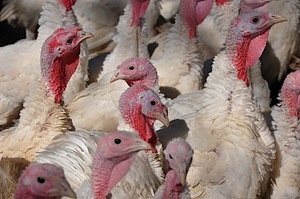Sharing the information I found gives others a reason to act. I am facilitating criminal activities even though it is not my intent. I have then committed "animal facility interference" (as defined by the Minnesota Ag-Gag Bill, House File No. 1369) and the loss of revenue and potential threat of theft is certainly "interfering with the operations of an animal enterprise" according to AETA. The Iowa Ag-Gag Bill, Senate Fill No. 431 states this conspiracy relationship clearly:
A person who participates in a conspiracy to commit the offense of animal facility tampering, and who acts in furtherance of that commission, is guilty of the same offense as the person convicted of committing the offense on or in the animal facility.
In April 2010, the Humane Society posted a video they had created by going undercover at two chicken farms using the same methods I outlined above. It is a very disturbing video (here is the link if you want to see it) and it would be illegal under these proposed bills.
John Maday, managing editor the nation's oldest monthly livestock magazine Drovers, argued in February 2011 in response to the proposed Ag-Gag legislation that:
We need more transparency in agricultural production. In reality, the vast majority of livestock operations are well-managed, with owners and workers adhering to high standards of animal care. Consumers do want to know more about their food and where it comes from, and when they have a chance to see and experience modern livestock production first-hand, they typically come away with positive impressions.
For farmers and ranchers, the focus should not be on legislation or other means of concealing their production practices. Instead, they should engage the public with a policy of transparency.
Thank you Slow Food USA for bringing this to my attention and for your campaign. Thank you John Maday for your belief in "a policy of transparency" for our farms. Thank goodness I am not the only observer of this trend not sure we are heading in the right direction.
Here is the article on Real Time Farms!








